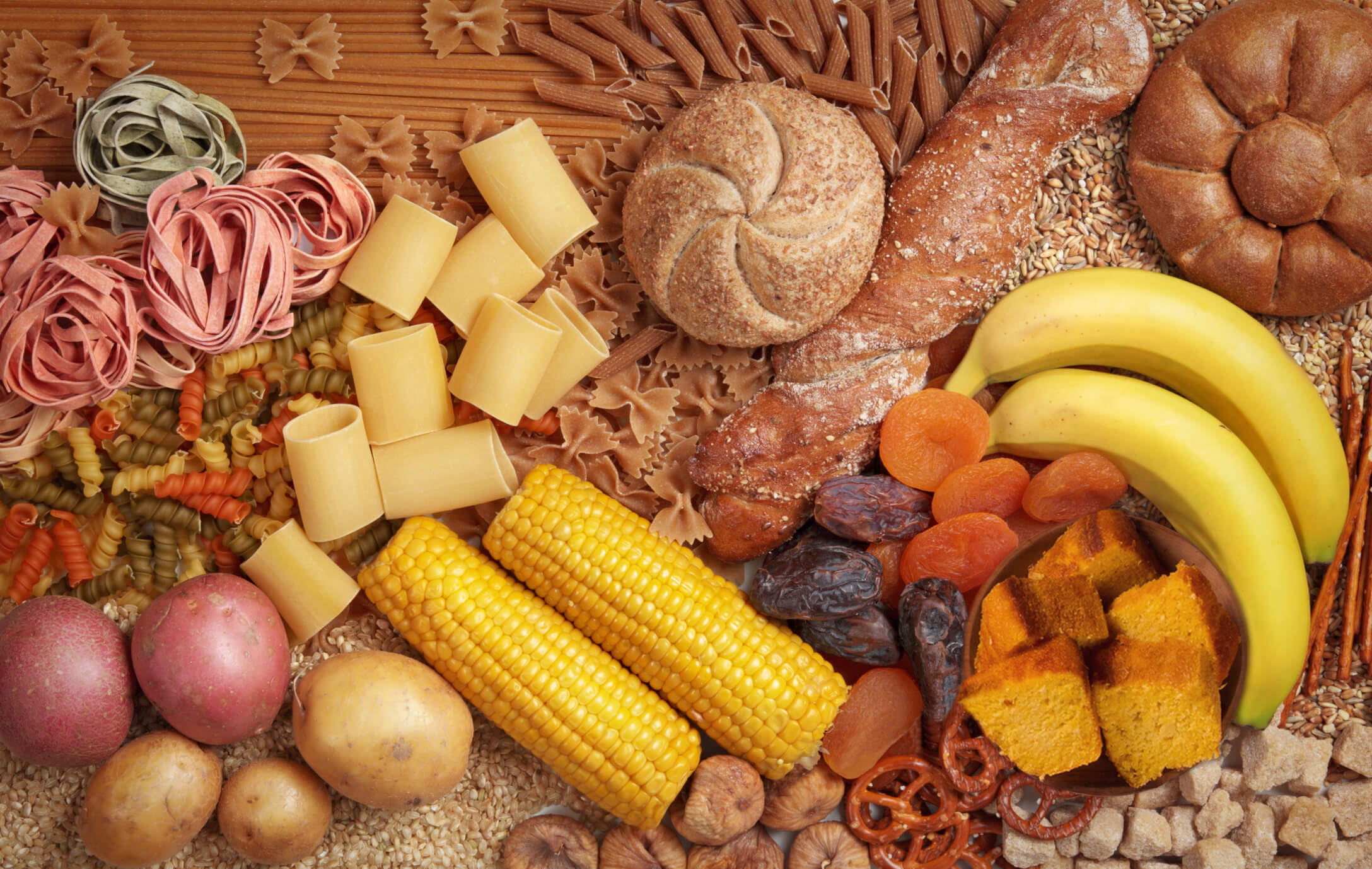

When someone mentions “starchy foods,” they typically don’t mean it in a good way. But there are several types of starches, and not all of them are unhealthy. Here’s what you need to know about starch, which foods contain it, and how to tell if they’re healthy or unhealthy.
Eco-Friendly Print Print with all Pictures 115 SharesYou know those giant pleated collars that European nobles wore in the 15th and 16th centuries? They’re called “ruffs,” which is kind of fitting since they look a bit like the cones worn by dogs who can’t stop chewing on itchy spots. Some ruffs were so wide that their wearers had to use special extra-long utensils to get food into their mouths.
The reason ruffs were popular (in addition to the fact that they made wearers assume a neck and head posture that proclaimed their nobility) was that they were really time-consuming and expensive to maintain — and the key ingredient in keeping them from folding or drooping was starch.
These days, starch is still used to stiffen collars, though at much less extreme levels. It’s also an important ingredient in industrial production, included in products like adhesives and paper. The single biggest role for starch in the modern world, though? It’s what we eat.
What comes to mind when you hear the word “starches,” or “starchy foods”? For most people, it’s probably processed food — especially bread products like dinner rolls, crackers, and cookies. But there are also many whole, unprocessed foods that are high in starch: rice, corn, quinoa, and potatoes, for example. In fact, most traditional human diets have been centered around starches.
While it’s true that cookies and quinoa both contain starch, they don’t affect the body in the same way. If your idea of starches is only based on processed grains or fried potatoes, you may be surprised to learn that some starches are among the healthiest foods you can eat. In fact, some types of starch offer gut health benefits that can’t be achieved with any other food, making them important foods for a healthy life.
So, what are starches, exactly? Which types of starches are healthy and unhealthy, and how can you add more of the good ones to your diet?

Three types of carbohydrates are found in nature: sugar, fiber, and starches. This means that all starches are carbohydrates, but not all carbohydrates are starches. Sugar, for example, is a simple carbohydrate, while both fiber and starches are complex carbohydrates.
This doesn’t mean that all starches act like complex carbohydrates once we subject them to processing, though. Most cookies, white bread, and crackers (for example) typically get digested as rapidly — and spike blood glucose just as dramatically — as simple carbohydrates like table sugar.
But, let’s back up and talk about starches as they appear in the plants that contain them. (Fun fact: You can’t get starch from eating an animal unless you eat the undigested plant matter in that animal’s digestive system, which sounds pretty gross to me.) These starches are natural compounds composed of long, branching chains of glucose (a sugar, and the primary source of energy for living cells). They’re produced in plants to serve as an energy source, helping plants survive when the climate is cold or dry. Starches are also an energy source for humans and other animals who then consume these plants further up the food chain.
When starches are digested, they’re broken down into glucose molecules with the help of digestive enzymes called amylases. (Here’s a joke I’ve been waiting my whole life to share: “What’s the name of the enzyme in saliva that breaks down starch?” “I don’t know, but it’s on the tip of my tongue.”)
Different types of plants contain varying amounts of starch. For instance, plants that can photosynthesize easily thanks to a large leafy surface area and many hours of full sun tend to have less starch than plants that have to save energy for literal and figurative rainy days.
Starches are made up of two kinds of molecule: amylose and amylopectin, which connect together to form starch granules. These molecules exhibit different characteristics that determine the digestibility of the starches that contain them. There are three types of starches, categorized by their digestibility. Starch-containing foods typically include all three types, in varying amounts. One of the molecules, amylopectin, turns into Rapidly Digestible Starch (RDS). The other, amylose, forms Slowly Digestible Starch (SDS) and Resistant Starch (RS).
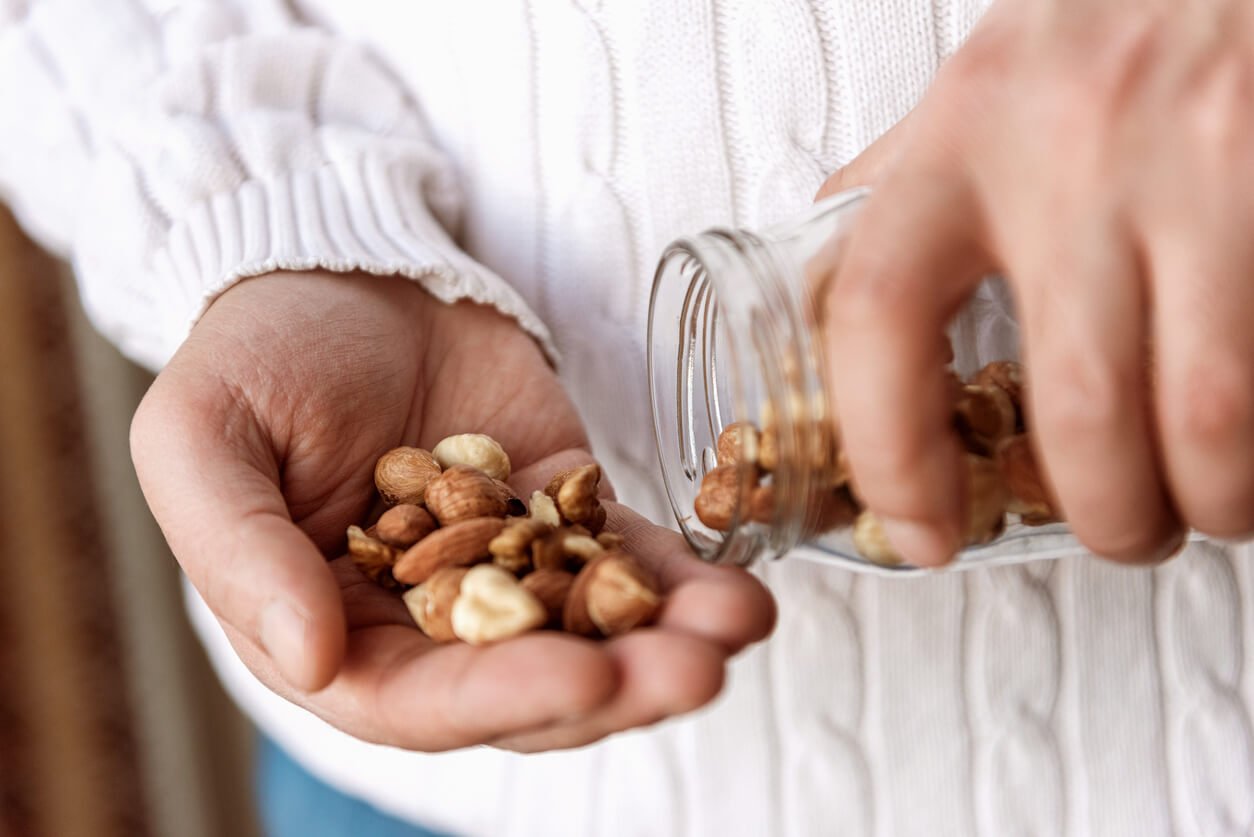
Around 20–30% of the starch in plant foods is amylose. Amylose is a straight-chain molecule that we digest and absorb slowly, which is why — surprise! — it’s called a slowly digestible starch, or SDS. It can help keep your blood sugar balanced because it does not cause a large spike in blood sugar levels, and is digested slowly throughout the entire length of your small intestine. This process helps provide a sustained release of glucose, with a low initial rise in blood sugar levels followed by a slow and prolonged release (over the course of two hours or so) of insulin. Starchy foods high in amylose rank low on the glycemic index, since they typically trigger a balanced energy release associated with good metabolic health.
You can think of low glycemic metabolism like an experienced driver keeping a steady foot on the accelerator pedal, versus a new driver who pushes too hard so that the vehicle lurches forward as it accelerates — and who may then need to apply the brakes to keep from speeding. Overall, eating SDS foods can help minimize both hyperglycemia after eating and any subsequent hypoglycemic drop.
As such, this type of starch may be helpful in controlling and preventing hyperglycemia-related diseases, including diabetes, obesity, and heart disease (or metabolic syndromes).
High-SDS foods may also support heart health by improving levels of HDL “good” cholesterol, particularly in women. They have also been shown to help reduce serum total cholesterol, LDL “bad” cholesterol, and free fatty acids in the bloodstream (all of which can increase your risk for heart disease at high levels). In one study, researchers found that five weeks of a low-GI, high-SDS diet helped improve blood fat levels, reduce total fat mass, and increase lean body mass — which is to say, study participants grew more muscle and lost body fat.
Lastly, eating more SDS may promote fat oxidation at the expense of carbohydrate oxidation — in other words, it may help you lose body fat by moving fat to the top of the “which fuel shall we burn next” list.
High amylose foods include legumes, nuts, and seeds.

Approximately 70–80% of the natural starch found in plants is amylopectin, which we tend to digest rapidly. In foods that are very high in rapidly digestible starch (RDS), the glucose units are easily digested when you eat them, which can lead to a quick spike in blood sugar quickly followed by a hunger-producing drop in blood sugar (a phenomenon known as hypoglycemia).
RDS is usually absorbed in your upper small intestine within about 30 minutes. The swift rise and fall in blood sugar levels comes about as your pancreas secretes insulin into your bloodstream to reduce glucose levels as quickly as possible. This large fluctuation in blood glucose generates oxidative stress in the body that can lead to cell, tissue, and organ damage. That inflammation and stress may lead to chronic disease formation — so basically, the opposite of the positive effects seen in SDS. These effects, over time, are particularly dangerous for people with insulin resistance and diabetes.
While SDS is associated with lower-GI foods, RDS is associated with high-GI foods, a category consisting largely of highly processed, or simple, carbohydrates. (For more on the glycemic index, we have an article here.) You’re more likely to find RDS in foods like white breads, breakfast cereals, and commercial baked goods, as well as boiled white rice and processed potato products like instant potatoes and potato chips.
Long-term consumption of a high-RDS diet can lead to weight gain or obesity.
Making matters worse, RDS doesn’t always ride alone. When foods high in RDS are cooked at high temperatures they can form acrylamide, which is a carcinogen. Some foods that contain higher levels of acrylamide include french fries, potato chips, and processed foods made from grains (such as breakfast cereals and cookies).
My intention here isn’t to demonize amylopectin, which, after all, is naturally found in all starchy foods. It is digested more quickly than amylose, but if it’s part of a food that is also rich in amylose (or if it’s paired with other high-fiber and high-amylose plant foods), your body should be able to absorb it happily without experiencing a negative impact on blood sugar and inflammation.
And, RDS is definitely good for at least one thing: Because you typically experience a glucose spike after eating high-RDS foods, they can be useful for fueling athletic performance. Endurance athletes generally agree that high-RDS foods are useful to keep muscles working during an event or grueling training session, even if they avoid those cookies, PB&J sandwiches, and energy bars the rest of the time. Most research, however, still prioritizes quantity of carbohydrate over type of carbohydrate when it comes to fueling (and recovering from) exercise.

Resistant Starch (RS) is a type of amylose, a fermentable fiber that is not digested. It is, however, fermented by the trillions of bacteria in your colon. This fermentation produces short-chain fatty acids that provide energy to cells in your large intestine and do a whole lot of good pretty much everywhere in your body, as we’re about to see.
The foods highest in resistant starch are whole grains, legumes, potatoes, and green bananas.

Resistant starch boasts a number of significant health benefits that may help in the prevention of chronic disease. Below are four ways in which resistant starch has been shown to be good for you. As you’ll see, it has plenty of reason to brag.
Undigested carbohydrates, including resistant starch, are prebiotics that ferment and turn into food for the good bacteria in your digestive system. Eating resistant starch boosts the population of these beneficial bugs, which are commonly called probiotics. So fortified, these good critters crowd out the bad ones, making for a happier gut (and a healthier gut owner).
Eating resistant starch helps to heal gut issues while preventing the development of a leaky gut that could otherwise drive food allergies, inflammation, and weight gain.
The positive change that resistant starch brings about in your gut microbiota may even translate to benefits for kidney health. Studies have shown that RS helps those with chronic kidney disease reduce inflammatory and toxic biomarkers in their plasma. RS increases the number of good bacteria, strengthening the epithelial lining and outcompeting bacteria that produce harmful metabolites. Thus, fewer inflammatory agents are able to reach the bloodstream and cause issues for those with compromised kidneys.
Research shows that in humans, consumption of RS increases insulin sensitivity. This makes sense, as we’ve already seen that its lower digestibility leads to a decreased release of glucose into the bloodstream.
The metabolic benefits of dietary RS, especially in terms of improvements in insulin processing, occur independently of your gut microbiota. In one study, 15–30 grams (about 2–4 tablespoons) of potato starch per day improved insulin sensitivity and fat loss in obese men.
Some researchers suggest that RS may help to prevent or treat obesity. How? RS is low in digestible calories. Low-caloric-density eating has been shown to be a sustainable approach to weight loss, since dieters may feel less deprived with a higher volume of food.
Furthermore, RS can work on a metabolic level to help reduce fat accumulation through its influence on gut bacteria and lipid metabolism.
A high cholesterol level and, in particular, a high ratio of LDL “bad” cholesterol to HDL “good” cholesterol, is a risk factor for developing heart disease.
But a 2018 meta-analysis (including 20 trials and published in Nutrition Research) showed that resistant starch was able to lower LDL cholesterol. Researchers found that adding resistant starch to subjects’ diets optimized triglyceride and cholesterol levels while decreasing fat mass. The effects were found to be most prominent when people ate at least 20 grams of RS per day, and did so for at least 4 weeks.
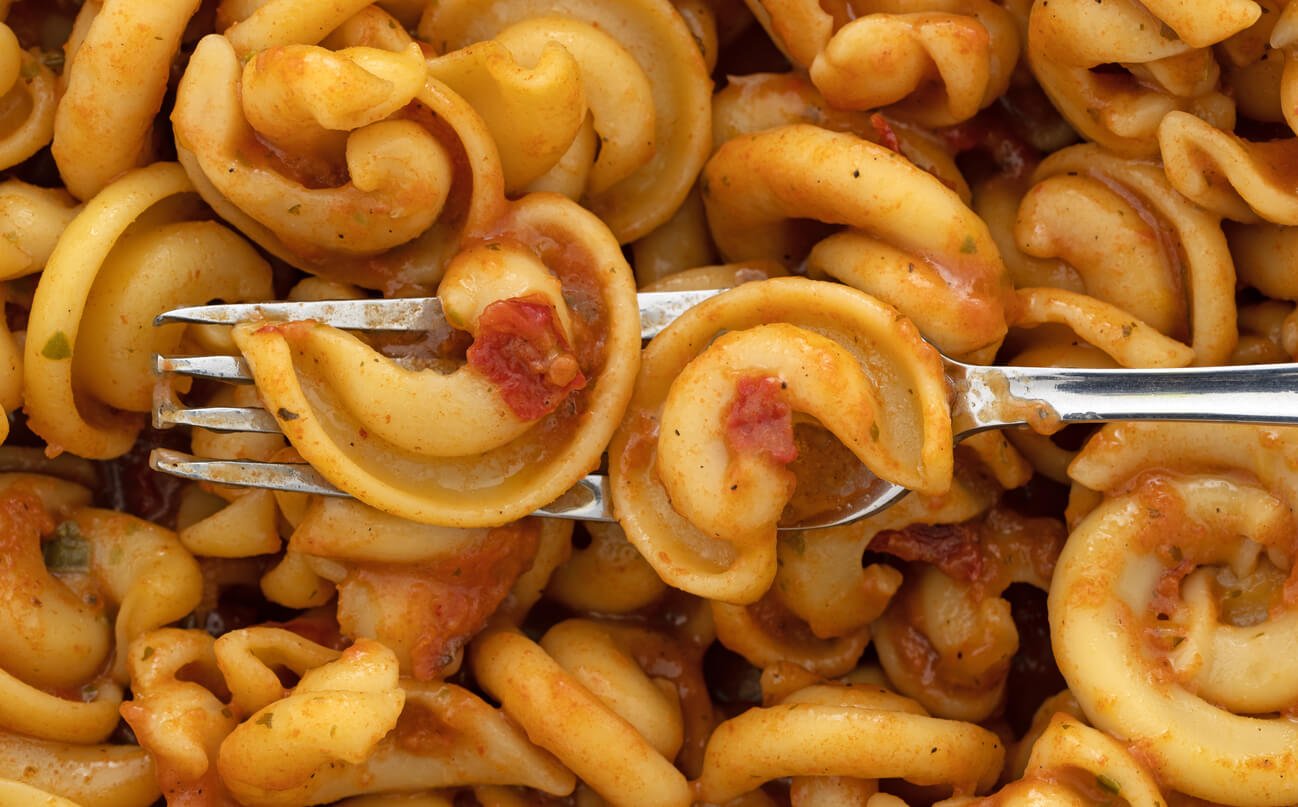
Another way to optimize your intake of resistant starch is to pay attention to how you’re preparing starchy foods in your diet. In general, the longer you cook food (and the higher the cooking temperature), the less resistant starch you’ll be left with.
In one study, though, eating cooled and reheated pasta was associated with a faster return to baseline blood sugar, compared to eating regular hot pasta. Reheated pasta — as in, leftovers — also showed significantly reduced blood glucose compared to freshly cooked pasta.
So, some common food preparation methods (including reheating leftovers) are thought to add to the availability of resistant starches. The mechanism that makes this work is unclear. Some studies suggest that the storage and reheating process might increase resistant starch by promoting interactions between the starch and other components of the food, like proteins and lipids.
Still, if leftovers aren’t your thing, don’t worry. Simply enjoying more whole plant foods at each original meal is a great way to increase your overall resistant starch consumption.
We’ve established the type of starches that has the most to offer, but how much should you be eating? For a bit of context, let’s look at how much different populations of the world consume.
It appears that humans living in different places have unique dietary adaptations to starches. Interestingly, people in most highly industrialized countries like the United States, Europe, New Zealand, and Australia, get on average around three to nine grams of resistant starch per day in their highly processed diets. On the other hand, residents of countries with more traditional diets (often based around whole plant foods) tend to get 30–40 grams of resistant starch per day.
Are three to nine grams per day enough? Well, there’s no official RDA for resistant starch, but the research tells us that a better goal is to consume at least 15–20 grams per day for the most health benefit. One 2009 study even reported that the acceptable daily intake of resistant starch may be as high as 45 grams in adults.
The good news is that it’s easy to get enough resistant starch (not to mention all the other forms of fiber) if you eat plenty of whole plant foods.

If your current diet doesn’t contain much resistant starch, there are plenty of ways you can add some.
The best way to reap the benefits of resistant starch is to increase your consumption of whole foods that naturally contain it. While you’re at it, try to eat them in their whole state — not ground up, pureed, or otherwise blended, as we’ve seen that processing generally lowers RS levels.
Easy ways to enjoy more whole food sources of resistant starch include:
To give you an idea of how much resistant starch certain foods contain, here are some examples:
Another way to boost your intake of resistant starch is to eat these types of foods with berries. Why? Berries act as starch blockers. Raspberries, for example, inhibit the enzyme that we use to digest starch, leaving more for your gut flora.
You might also enjoy using resistant starch flours in the kitchen. Two of the flours that are highest in resistant starch are potato starch and green banana flour. Both of these lose their digestion resistance when cooked, though, so for optimal health benefits it’s best to add them to raw foods like smoothies, shake mixes, or energy balls (or just sprinkle them over other foods).
These recipes are rich in complex carbohydrates, including fiber and resistant starch. Make and enjoy all three to meet the goal of 15–20 grams of resistant starch (or more) per day!
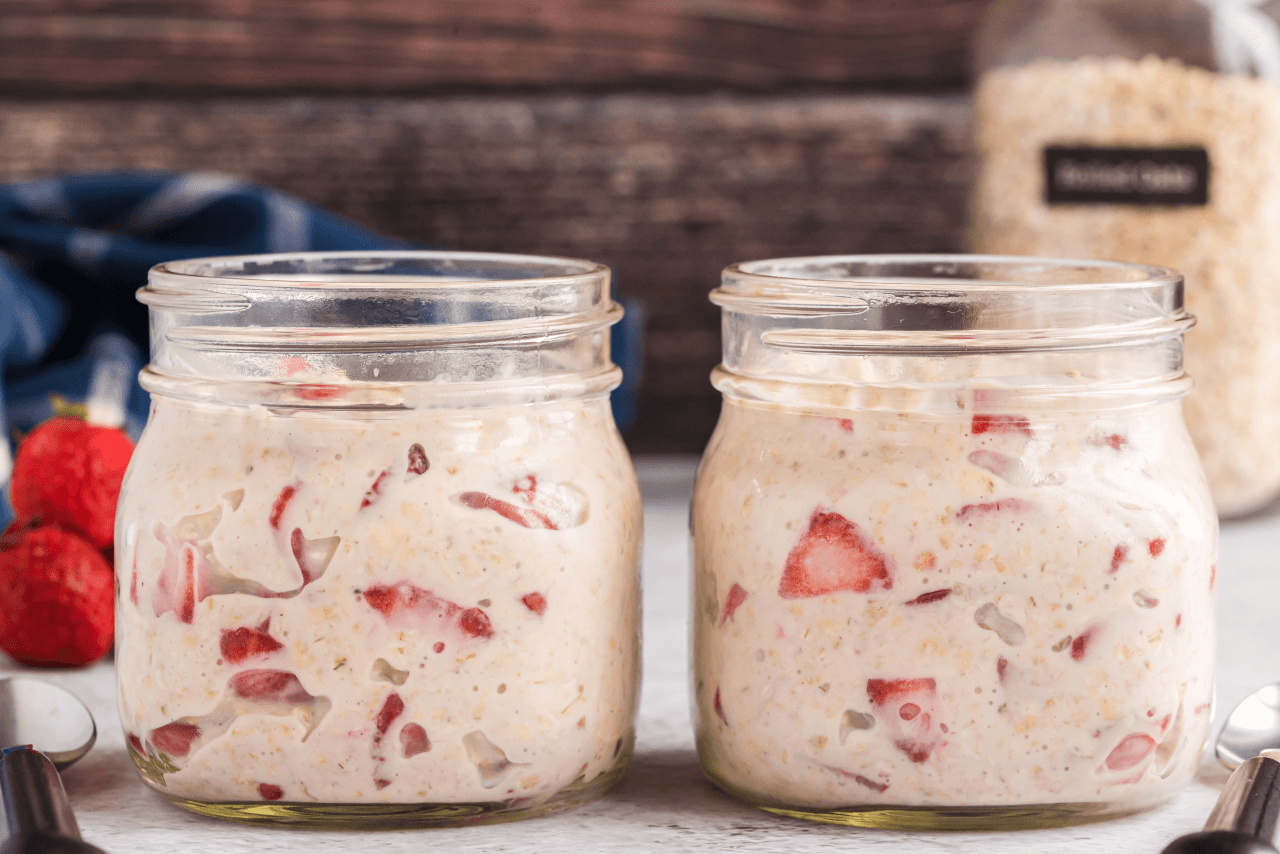
Optimize your resistant starch consumption by enjoying a food that boasts plenty of it (oats) along with a food that blocks digestion of starch (strawberries). Easy to make, this breakfast is also bursting with nutrition and flavor!

Potatoes contain some resistant starch naturally, but you can create even more by making a delicious and creamy cold potato salad. Organic tofu makes a velvety mayo dressing while celery, peppers, and onions give it some crunch. Serve this slow-digesting starchy dish as a side to your main meal, or as part of your picnic menu.
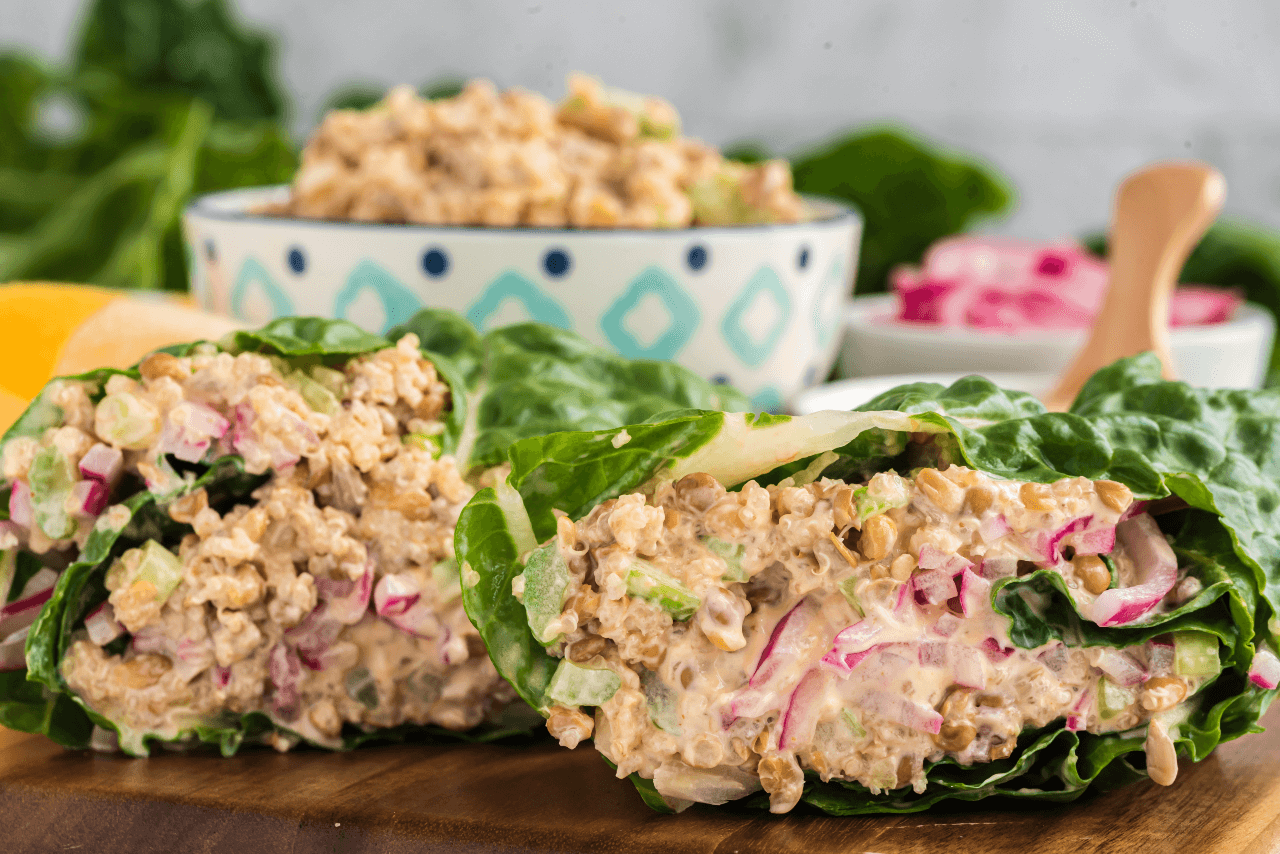
Get lots of gut-health goodness in this wrap that can serve as an appetizer or a whole meal. The combination of lentils and quinoa is high in complex carbohydrates (including fiber and resistant starch), especially when it’s served chilled. The flavors, textures, and nutrients in this dish satisfy the taste buds, help manage blood sugar, and nourish the gut.
Starches and starchy foods often get a bad rap, but, like carbohydrates in general, not all starches are unhealthy. Starches that are slowly digested (or not digested at all, in the case of resistant starch) can be beneficial for health and disease prevention, especially by supporting your gut health. While there is no official recommended daily intake for resistant starch, many people might benefit from including more of it in a healthy, balanced diet — especially when it comes to digestive health, and the prevention of diabetes and obesity.
Feature Image: iStock.com/Egal